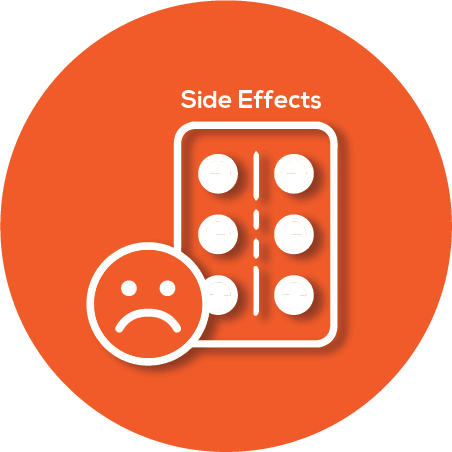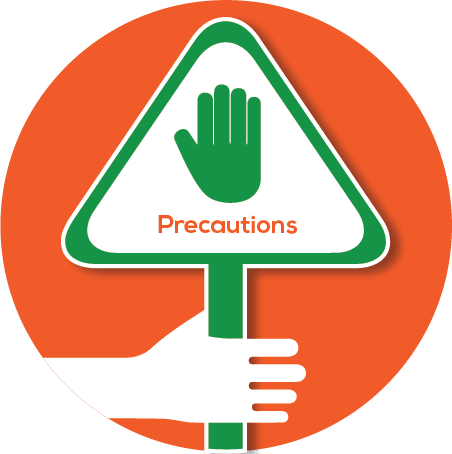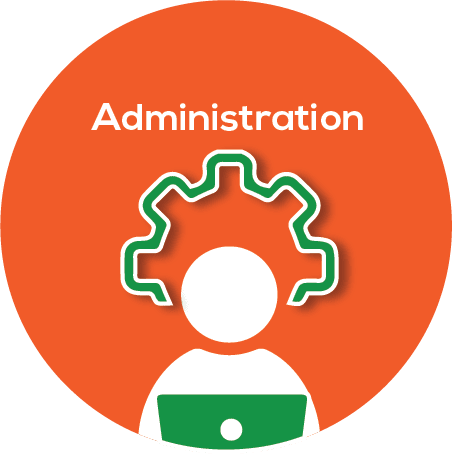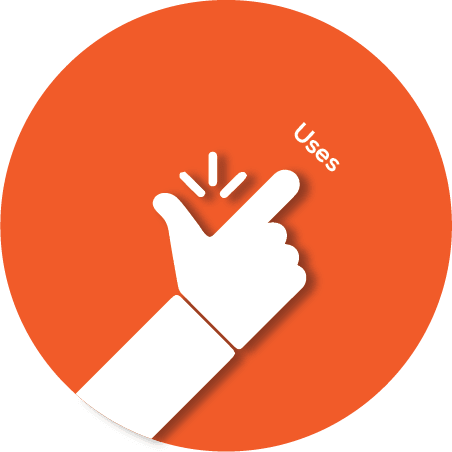Clothalton 100mcg/15mg Tablet CLONIDINE + CHLORTHALIDONE
It is recommended to take Clothalton 100mcg15mg Tablet with food Taking it at the same time every day will ensure you get the most benefit from it This medication helps in eliminating excess water through urine so it is advisable to take it during the daytime to avoid frequent urination at night Always follow your doctors advice regarding the dosage and frequency of taking this medication The effectiveness of the dosage and how often you should take it will depend on the purpose for which you are taking it Your doctor will determine the appropriate amount to improve your symptoms It is important to take this medicine as long as prescribed Common side effects of this medicine may include dryness of the mouth sedation and slow heart rate Regular monitoring of kidney function and electrolyte levels is crucial while using this medication For optimal results this medicine should be accompanied by lifestyle changes such as a healthy diet regular exercise and smoking cessation Before taking this medicine inform your doctor if you are pregnant or breastfeeding Additionally disclose any history of blood circulation problems as well as liver or kidney issues Your doctor should also be informed about all other medications you are currently taking as some of them may reduce the effectiveness of this medicine or alter its mode of action

Are the medicines in combination of Chlorthalidone and Clonidine safe to take together?
Chlorthalidone and Clonidine can be taken together, but it is important to do so under the guidance of a healthcare professional. Both medications are used to manage high blood pressure, but they work in different ways. Chlorthalidone is a diuretic, which helps the body get rid of excess salt and water, while Clonidine works by relaxing blood vessels so blood can flow more easily. Taking these medications together can enhance their blood pressure-lowering effects, but it may also increase the risk of side effects such as dizziness, lightheadedness, or fainting, especially when standing up quickly. It's crucial to follow your doctor's instructions and report any unusual symptoms. For more detailed information, you can refer to trusted sources like the [NHS](https://www.nhs.uk/), [DailyMeds](https://dailymeds.co.uk/), or the [NLM](https://www.nlm.nih.gov/).

Are there harms and risks from taking combination of Chlorthalidone and Clonidine?
Taking Chlorthalidone and Clonidine together can have potential risks and side effects. Chlorthalidone is a diuretic, which means it helps your body get rid of extra salt and water by making you urinate more. Clonidine is used to lower blood pressure by relaxing blood vessels. When used together, these medications can sometimes cause your blood pressure to drop too low, leading to symptoms like dizziness, lightheadedness, or fainting. This is because both drugs lower blood pressure, and their combined effect might be stronger than intended. Additionally, both medications can cause drowsiness or fatigue, and using them together might increase these effects. It's important to monitor your blood pressure regularly and report any unusual symptoms to your healthcare provider. Always consult with your doctor or pharmacist before starting or combining medications to ensure they are safe for you, especially if you have other health conditions or are taking other medications.

Can I take combination of Chlorthalidone and Clonidine if I am pregnant?
It is important to consult your healthcare provider before taking any medication during pregnancy, including Chlorthalidone and Clonidine. Chlorthalidone is a diuretic, which means it helps your body get rid of extra salt and water by making you urinate more. It is generally not recommended during pregnancy as it can affect the balance of fluids and electrolytes in your body, which might impact the baby. Clonidine is used to treat high blood pressure. Its use during pregnancy is not well-studied, and it should only be used if the potential benefits justify the potential risks to the fetus. Always discuss with your doctor to understand the safest options for managing your health during pregnancy.

Can I take combination of Chlorthalidone and Clonidine while breastfeeding?
When considering the use of Chlorthalidone and Clonidine while breastfeeding, it's important to understand their effects: 1. **Chlorthalidone**: This is a diuretic, which means it helps your body get rid of excess salt and water by increasing urine production. According to the NHS, diuretics can potentially reduce milk supply, so caution is advised when using them during breastfeeding. 2. **Clonidine**: This medication is used to treat high blood pressure. The NLM notes that Clonidine can pass into breast milk, but the effects on a nursing infant are not well-studied. Therefore, it is generally recommended to use it with caution and under medical supervision. Before taking these medications, consult with a healthcare professional to weigh the benefits and risks, and to explore possible alternatives that might be safer during breastfeeding.

Can I take combination of Chlorthalidone and Clonidine with other prescription drugs?
Chlorthalidone and Clonidine are medications that can be used together, but it's important to be cautious when combining them with other prescription drugs. Chlorthalidone is a diuretic, which means it helps your body get rid of extra salt and water, and Clonidine is used to lower blood pressure. When taking these medications, you should be aware of potential interactions with other drugs. For example, combining them with other blood pressure medications can lead to excessively low blood pressure. Additionally, Chlorthalidone can affect the levels of potassium in your body, so drugs that also influence potassium levels should be monitored closely. It's crucial to consult with your healthcare provider or pharmacist before adding any new prescription drugs to your regimen. They can provide guidance based on your specific health needs and ensure that all your medications work safely together.

For how long is combination of Chlorthalidone and Clonidine taken?
The duration for taking a combination of Chlorthalidone and Clonidine depends on the individual's medical condition and response to treatment. These medications are typically used to manage high blood pressure. It's important to follow the healthcare provider's instructions and not to stop taking the medication without consulting them, as this could lead to a sudden increase in blood pressure. Regular check-ups are necessary to monitor the effectiveness and adjust the dosage if needed. Always consult with a healthcare professional for personalized advice.

How does combination of Chlorthalidone and Clonidine work?
Chlorthalidone and Clonidine are medications often used together to help manage high blood pressure. Chlorthalidone is a type of medication known as a diuretic, sometimes called a 'water pill.' It helps your body get rid of extra salt and water by making you urinate more. This process reduces the amount of fluid in your blood vessels, which lowers blood pressure. Clonidine works differently. It is a type of medication called an alpha-agonist. It helps lower blood pressure by decreasing the levels of certain chemicals in your blood, which allows your blood vessels to relax and your heart to beat more slowly and easily. Together, these medications help control blood pressure by reducing the volume of blood and relaxing blood vessels, making it easier for the heart to pump blood throughout the body.

How does one take combination of Chlorthalidone and Clonidine?
Chlorthalidone and Clonidine are medications often used to manage high blood pressure. Chlorthalidone is a diuretic, which means it helps your body get rid of extra salt and water by making you urinate more. Clonidine works by relaxing blood vessels so blood can flow more easily. When taking these medications together, it's important to follow your healthcare provider's instructions carefully. Typically, you would take Chlorthalidone in the morning to avoid frequent urination at night. Clonidine can be taken with or without food, but it's crucial to take it at the same time each day to maintain even levels in your body. Always check with your doctor or pharmacist if you have any questions about your medication schedule or if you experience side effects like dizziness or fatigue, which can occur with these medications. Never stop taking these medications suddenly without consulting your healthcare provider, as this can cause a rapid increase in blood pressure.

How do I know if combination of Chlorthalidone and Clonidine is working?
Chlorthalidone and Clonidine are medications used to manage high blood pressure. To determine if this combination is effective, you should monitor your blood pressure regularly. A successful treatment will result in your blood pressure readings moving closer to the target range set by your healthcare provider. Chlorthalidone is a diuretic, which helps your body get rid of excess salt and water, reducing blood pressure. Clonidine works by relaxing blood vessels, allowing blood to flow more easily. Signs that the medication is working include a reduction in symptoms associated with high blood pressure, such as headaches, dizziness, or shortness of breath. However, it's important to follow up with your healthcare provider to assess the effectiveness of the treatment and make any necessary adjustments. Always consult your doctor before making any changes to your medication regimen.

How do I store combination of Chlorthalidone and Clonidine?
To store a combination of Chlorthalidone and Clonidine, keep the medication in a cool, dry place away from direct sunlight and moisture. It should be stored at room temperature, typically between 20°C to 25°C (68°F to 77°F). Ensure the medication is kept out of reach of children and pets. Do not store it in the bathroom or near a sink, as the humidity can affect the medication's effectiveness. Always check the packaging for any specific storage instructions provided by the manufacturer.

How effective is combination of Chlorthalidone and Clonidine?
Chlorthalidone and Clonidine are medications often used together to manage high blood pressure. Chlorthalidone is a diuretic, which means it helps your body get rid of extra salt and water, reducing blood pressure. Clonidine works by relaxing blood vessels, making it easier for your heart to pump blood. The combination of these two drugs can be effective because they work in different ways to lower blood pressure. According to the NHS and other trusted sources, using them together can provide better blood pressure control than using either drug alone. However, it's important to follow your healthcare provider's advice, as they will tailor the treatment to your specific needs and monitor for any side effects.

How long does it take for combination of Chlorthalidone and Clonidine to work?
Chlorthalidone and Clonidine are medications used to manage high blood pressure. Chlorthalidone is a diuretic, which helps your body get rid of extra salt and water, while Clonidine works by relaxing blood vessels so blood can flow more easily. The combination of these medications can start to lower blood pressure within a few hours, but it may take several days to see the full effect. It's important to take these medications as prescribed by your healthcare provider and to continue monitoring your blood pressure regularly. If you have any concerns or experience side effects, consult your healthcare provider.

What disease or symptom is combination of Chlorthalidone and Clonidine used for?
The combination of Chlorthalidone and Clonidine is used to treat high blood pressure, also known as hypertension. Chlorthalidone is a diuretic, which helps the body get rid of excess salt and water by increasing urine production. This helps to lower blood pressure. Clonidine works by relaxing blood vessels, which also helps to lower blood pressure. Together, these medications help to reduce the risk of complications such as heart attacks and strokes that can occur with high blood pressure.

What is combination of Chlorthalidone and Clonidine?
Chlorthalidone and Clonidine are two different medications that can be used together to manage high blood pressure. Chlorthalidone is a type of medication known as a diuretic, or "water pill." It helps the body get rid of extra salt and water by increasing urine production, which can help lower blood pressure. Clonidine is a medication that works by affecting certain parts of the brain to help relax blood vessels, which also helps to lower blood pressure. When used in combination, these medications can be more effective in controlling high blood pressure than when used alone. However, it's important to use them under the guidance of a healthcare professional to ensure safety and effectiveness.

What is the usual dose of combination of Chlorthalidone and Clonidine?
The usual dose of a combination of Chlorthalidone and Clonidine can vary based on individual health needs and the specific formulation prescribed by a healthcare provider. Chlorthalidone is a diuretic, which helps reduce fluid retention and lower blood pressure, while Clonidine is used to treat high blood pressure by relaxing blood vessels. It's important to follow the dosage instructions provided by your doctor or pharmacist, as they will tailor the dose to your specific condition. Always consult with a healthcare professional before starting or adjusting any medication.

Who should avoid taking combination of Chlorthalidone and Clonidine?
People who should avoid taking the combination of Chlorthalidone and Clonidine include those with certain medical conditions or who are taking specific medications that could interact negatively. According to trusted sources like the NHS and NLM, individuals with severe kidney or liver disease, those who are allergic to either medication, or those with a history of heart problems should be cautious. Additionally, people taking other medications that lower blood pressure or have similar side effects should consult their healthcare provider to avoid potential interactions. It's important to discuss with a doctor before starting or combining these medications to ensure safety and effectiveness.











.svg)
